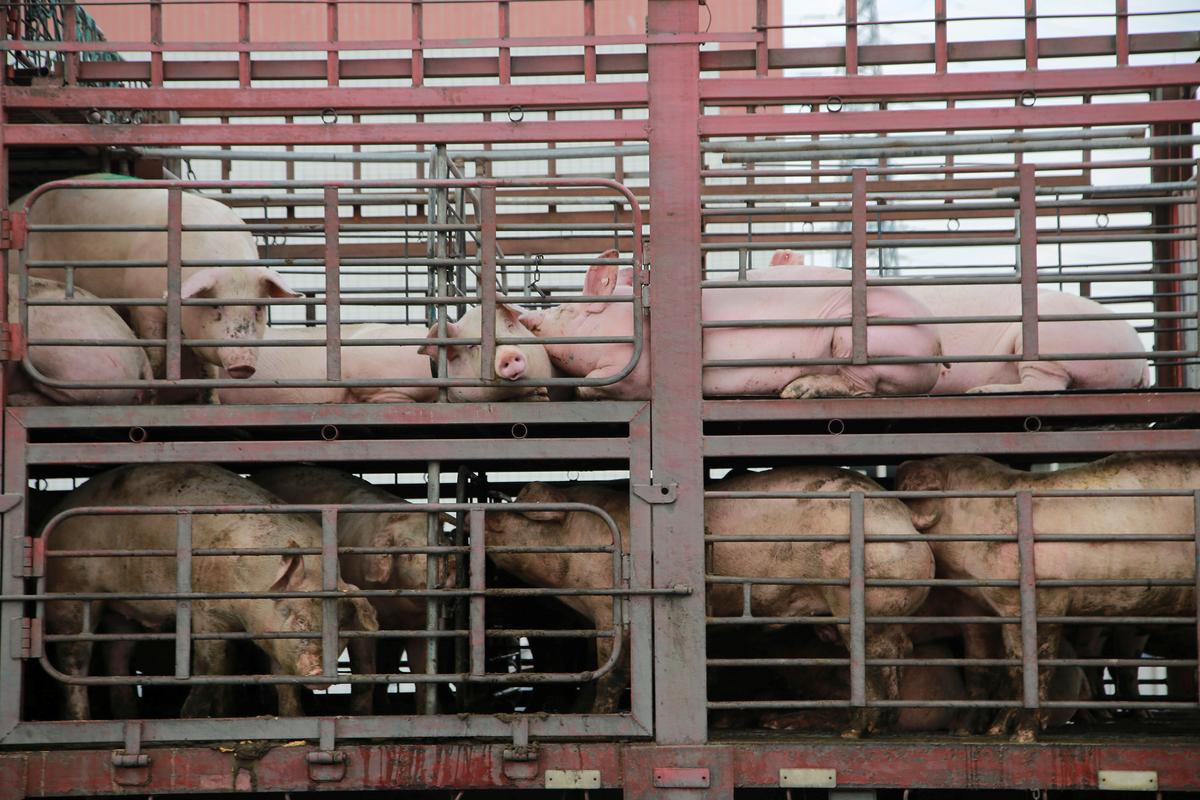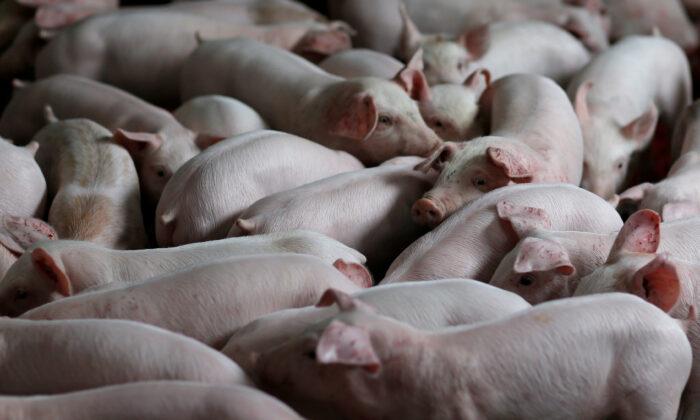BEIJING—Six planes carrying more than 4,000 high-quality French breeding pigs have arrived in China so far this year, the first of an expected dozens of plane-loads as the world’s top pork producer rebuilds its decimated hog herd.
China is ramping up imports as it rushes to restock after an outbreak of African swine fever (ASF) swept through the country from late 2018, killing tens of millions of pigs and reducing its sow herd by as much as 60 percent.
Soaring pork prices and a government drive to rebuild have prompted farmers who had halted buying to resume orders, with some doubling contracts that had been signed prior to the disease. Each charter is worth up to 1.5 million euros ($1.6 million).
“It’s like after World War Two. They lost half the herd and need to repopulate fast to get it back,” said Marie Pushparajalingam, global strategist for French swine genetics company Axiom.
China imports breeding pigs to take advantage of traits like increased productivity and better meat quality that global genetics firms select for during breeding. A top breeding sow can have a litter of as many as 16 piglets.
Axiom sent two 777 charters to China in January, followed by two 747s last month, totaling about 3,400 pigs. It has signed deals for a further six plane-loads later in the year, said Pushparajalingam, and is expecting additional business.
Another 500 boars bred by Dutch firm Topigs Norsvin arrived from France in southwestern Guizhou last week, said China’s Dekang Group, which will use the pigs in a nucleus breeding farm to produce 20 million pigs for slaughter.
China typically slaughters about 700 million pigs a year to produce more than 50 million tonnes of pork—about half of global consumption. But the disease outbreak cut pork output by 21 percent in 2019, sending prices soaring, and production is set to fall again this year.
Fattened hogs in China currently cost about 35 yuan ($4.93) a kilogram, or three times the price in France.
Under pressure to meet government targets for pork production, some provinces began offering import subsidies of about 2,000 yuan per pig to farmers last month.
Producers face a severe shortage of sows and are even holding back females normally destined for slaughter to use in breeding farms. Those pigs will produce much smaller litters than a sow bred to be a productive mother.
Imports from France alone this year look set to top the 11,000 pigs China imported from all countries in 2017, a year after pork prices hit a record.
In all, China may need more than 150 plane loads of pure bred pigs to replenish its herd, according to one genetics company estimate.

New ASF Cases
African swine fever was detected in seven dead wild boars in Shennongjia Forestry District in Hubei Province, China’s Ministry of Agriculture and Rural Affairs announced last month.The disclosure of a new ASF outbreak in central China has raised concerns that another large precautionary culling of millions of Chinese pigs could threaten food security and drive food prices much higher.
Pandemic Complicates Shipment
China’s customs has said it will allow more countries to ship live pigs, and is also working to resume exports from the United States, which has not been able to export to China during recent trade tensions.Still, cumbersome quarantine procedures for importing pigs and obstacles related to the coronavirus outbreak will limit overall numbers.
Before shipment, pigs must undergo a month of health checks and spend another 30 days in quarantine under observation by an official Chinese vet. On arrival, the pigs spend a further 45 days in a quarantine center to ensure they are disease free.
The coronavirus pandemic has further complicated shipments, said Laurent Poussart, manager of Francexporc, a pig freight specialist.
A sharp reduction in cargo planes flying between Europe and China is driving up costs, and China does not permit foreign airline crew to disembark.
Poussart’s latest cargo to China arrived just a day before the Chinese airline he was using cancelled all further flights to and from Europe.





